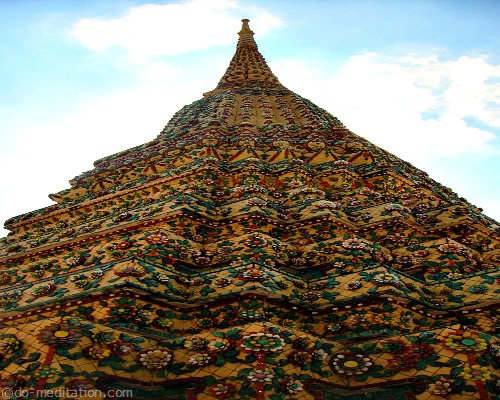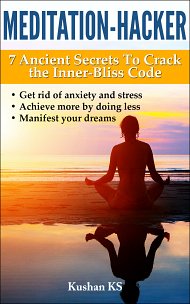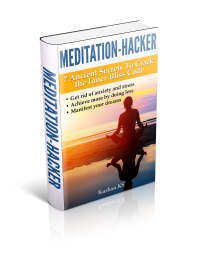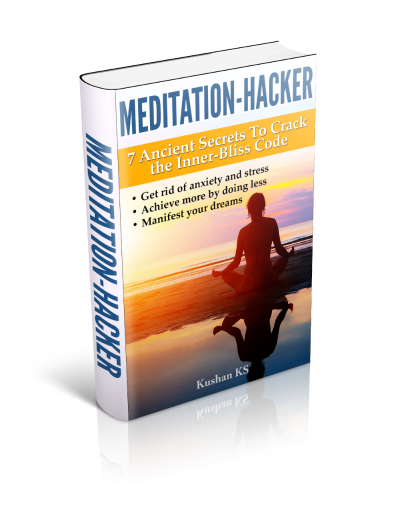How to Meditate for Beginners - Progressive Muscle Relaxation
"The relaxation response is a physical state of deep rest that changes the physical and emotional responses to stress... and is the opposite of the fight or flight response"
- Herbert Benson

In this second edition of the three-part How to Meditate for Beginners, we provide details of the progressive muscle relaxation technique.
If you are keen on knowing more about meditation basics, like meditation posture and when is a good time to meditate, read this first.
Back to PMR.
No matter whether you are starting out or are an old hand at meditation, spending two minutes before every session to induce the relaxation response will help you tremendously with your sit.
It helps by putting you in a state of deep rest - both physically and mentally. It is far easier to enter into meditation with a body at ease and a calm mind.
You may be a little surprised at my stressing so much on the body, when meditation is supposed to be all about the mind. Right?
To answer your question, let us step back in time to the ancient yogic texts, which state that body is not separate from the mind. There is no duality between the two and that they are one and the same thing!
The texts mention the outer or the physical body as the Annanaya Kosh or food sheath - it is born, grows, decays and dies.
Then there is the astral body which has three layers - Pranamaya Kosh or pranic sheath through which prana or vital energy flows, Manamaya Kosh or mental sheath comprising the automatic and the subconscious mind, and Vijnanayama Kosh or intellectual sheath where the ego and decision making faculty reside.
Finally, the causal body or Karana Sharir is the store house of Karma and has the Anandmaya Kosh, or bliss sheath, where experiences of joy and happiness reside.
Emotions have their roots in Karma, which percolate down through the astral body into the physical body.
The modern science of psychoneuroimmunology (PNI) has now conclusively proven the above and shown a complex interdependence between mind, body, emotions and spirit.
The practical application of all this is that the more you relax your body, prior to meditation, the more your mind relaxes. It is difficult to still the mind, but it is easy to relax the body.
And once the mind is at ease, it is easy to settle into meditation.
Let us see how progressive muscle relaxation is actually done.
- While sitting in your meditation posture, inhale and contract the muscles of your feet by squeezing and pushing out your toes , hold for two seconds and feel the tension in the muscles, then exhale, let go and relax
- Repeat the process with your calves, this time pulling your toes toward your knees to tense up the calf muscles. Feel the tension, hold, then exhale and relax. Pay attention to the relaxing muscles
- Move up and repeat with your thighs, buttocks, tummy, chest, shoulders, back, arms, jaws, eyes and forehead. Inhale, contract, feel the tension, hold, exhale, relax, feel the relaxation.
If for some reason, you are unable to contract and tense the muscles while sitting in the meditation posture, you may spread your legs out in front to do the progressive muscle relaxation (PMR) more effectively.
Once finished, return to the meditation posture and begin meditating.
When doing the PMR, give full attention to each of the following:
- feeling of muscles at rest
- feeling when contracted
- feeling when relaxing
- feeling when they are deeply relaxed
You may want to repeat the entire cycle once or twice, for deeper relaxation, or if you find pockets of stress that refuse to dissolve in the first try.
For most people, the relaxation response induced by doing the PMR will open the door to 'stillness' automatically.
For others, it will quieten the mind and bring the experience of the stillness in due course.
We can be patient. In our journey, no effort goes waste. Each conscious act of staying in awareness through meditation has a profound effect, whether or not we realize it.
You may have a seemingly 'fruitless' session wrecked by non-stop thoughts, but it paves the path to a deeper practice next time around.
There is definitely more happening than meets the eye.
So stay consistent and meditate regularly - the cumulative result of your practice will amaze you.
Time to move on from progressive muscle relaxation to the next section and introduce you to a couple of easy beginner meditations ...
Return from Progressive Muscle Relaxation to Beginners Guide

Get my book, Meditation-Hacker: 7 Ancient Secrets to Crack the Inner-Bliss Code and receive valuable information on meditation that you can use to improve the quality of your health and life.


Comments
I would love to hear your meditation experiences. And, if you are a beginner, your questions and apprehensions about meditation. Comment below or contact me directly through the navigation bar on the left of this page.